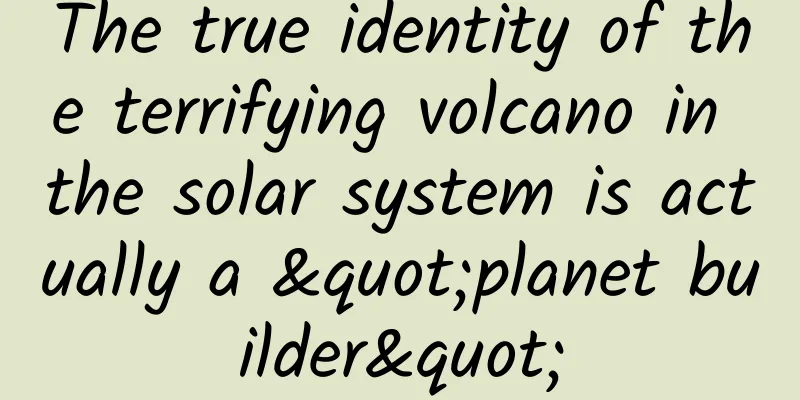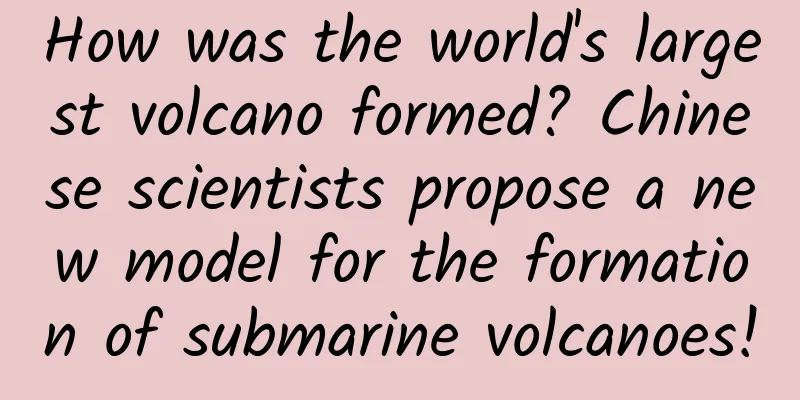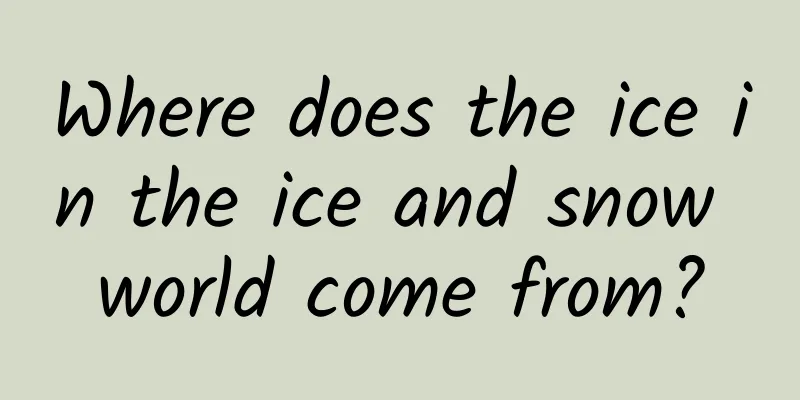The true identity of the terrifying volcano in the solar system is actually a "planet builder"

|
When it comes to volcanic eruptions, everyone should be familiar with them. It's the kind of thing that looks like someone is going through a tribulation when it erupts. The 1980 eruption of Mount St. Helens spewed billions of tons of dust Actually, not all volcanoes are active all the time. There are three types of volcanoes: active volcanoes that are still active; One type refers to extinct volcanoes that were active in prehistoric times but have no record of eruptions in history. One type is a dormant volcano that has records of activity in history but has been inactive since then, and then wakes up to scare you to death. In fact, the so-called volcanic activity is nothing more than the escape journey of magma deep under the earth's surface. Because the temperature and density inside the earth are uneven, mantle convection or mantle plumes are formed inside the mantle. Mantle convection diagram When high-temperature material rises to the shallower parts of the Earth, it partially melts due to reduced pressure. Under the influence of external forces, these molten materials gather together and form magma chambers (areas filled with magma) in the shallow part of the earth. When the pressure of the magma chamber is greater than the pressure of the formation, the magma will break through the crust along faults or weak points, causing a volcanic eruption. Another reason is due to plate interaction. For example, in the subduction zone or collision zone of a plate, local high temperatures are generated due to friction, and the dehydration of some water-containing minerals also lowers the melting point of the rock. At this time, magma chambers will also be formed, thus triggering volcanic activity. Really everything can move with plate tectonics... The number of disasters caused by volcanic eruptions that have been recorded in history is actually... too many to count (there are more that are not recorded). The most famous of these is the eruption of Mount Vesuvius. What? Never heard of it? Suwei Suwei? No, this volcano was the "murderer" that destroyed the ancient city of Pompeii. The disaster movie "Pompeii" recreates an erupting volcano, dark red magma, radiating flames, and billowing black smoke, all of which show the horror of a volcanic eruption. So when most people think of a volcanic eruption, the first thing they think of is its powerful destructive power. But in fact, volcanoes have been silently shaping the topography of the planet since the birth of the solar system, and can be described as a conscientious and responsible "master builder." It has made a lot of contributions in building continents and islands, shaping deep-sea mountains and craters. When they spew out lava and other materials, the huge impact force of the eruption causes the lava, gas, ash, etc. to spread around, eventually forming conical hills and mountains. In fact, the earth was originally a volcanic world, and was later covered by the vast ocean. Therefore, the temperature of the ocean was extremely high in the earliest times. Although most volcanoes are now under the sea, volcanic activity has decreased by 80%. Another benefit is that volcanoes are often located in densely populated areas, such as the areas around Nasu and Fuji volcanoes in Japan. The reason is volcanic ash. The volcanic ash brought out by volcanic eruptions is a high-quality natural fertilizer. For example, mulberry trees in the Mount Fuji area grow particularly well, and the grapes on Mount Vesuvius also grow well with the nourishment of this natural fertilizer. Pahoehoe flow, a thick molten rock That's not enough. As mentioned above, volcanoes are polishing the planets in the solar system, but the solar system does not have only one planet - the Earth. Throughout the solar system, volcanoes exist and are active on many planets and even satellites. Closer to us, like Venus, are known to be volcanically active. Venus Fire Valley, source: arcadiastreet Mars has strong evidence of past volcanic activity, as it hosts the largest known volcano in the solar system - Olympus Mons, a massive shield volcano. Image source: NASA And Mercury shows signs of volcanic eruptions even early in its history. Saturn's moon Enceladus also has geyser features associated with volcanic activity, but instead of gushing out lava like Earth does, it spews out slushy ice crystals. These volcanic activities continuously "lay" layer after layer of dust on the surface of the planet through eruptions, while also adding bricks and tiles to the planet's surface atmosphere. 3000 meters above Venus, source: arcadiastreet Maybe it will even produce a second Earth... Image source: arcadiastreet Therefore, in the evolutionary history of the planet, volcanoes definitely play an indispensable role. They can enrich the atmosphere and soil, but they can also cruelly "cleanse" innocent life on the planet. However, the volcanic activities on these planets can allow us to gain a deeper understanding of the internal activities of the planets and decipher the internal secrets of the planets. |
<<: Is Maiqiu'er's explanation of the residue reliable?
>>: Octopus has parasites?! Octopus: That's my partner's penis...
Recommend
How can small companies promote their apps without celebrity endorsements?
Products endorsed by celebrities can bring good s...
220 million box office in 3 days: Why is "See You Tomorrow" so popular?
Han Han's "See You Tomorrow" box off...
User growth: How to establish a user perspective?
What is the user perspective? This is actually a ...
Super-large sunspots return, will geomagnetic storms and auroras appear again?
Produced by: Science Popularization China Author:...
2K screen HTC One M9 concept image exposed with extremely narrow bezel
Although it is rumored that HTC's next-genera...
Apple iOS 15.1 Beta 3 has restored the ability to disable keyboard notifications for Apple TV and Apple Watch separately
[[428304]] According to 9to5 Mac, when the offici...
I have summarized 8 ways to attract traffic from Douyin
When the graphic and text fields and other fields...
ZUK Z2 Pro won nine world firsts. Yang Yuanqing: I made the most correct decision
Yesterday, Jia Yueting just released LeEco's ...
Interesting story | Does land have more survival advantages than the ocean?
Recently, I saw some netizens discussing "Wh...
Chrome will soon be updated for iPad to provide multi-window support, security checks and other features
According to foreign media reports, Google's ...
What kind of meat is used in the grilled sausages sold on the street? Can we eat it?
We often see people selling grilled sausages on t...
How to master oCPC and efficiently complete customer acquisition and conversion?
Mobile Internet access, mobile payment, online sh...
I heard that people in Guangdong are buying long johns overnight because they are almost crying from the cold!
Key Points ★ The perceived temperature is actuall...
Zhang Meng's Life Efficiency Handbook course, thoughts after reading Zhang Meng's Life Efficiency Handbook!
This album will achieve the perfect transformatio...
Be careful if your phone shows these 4 symptoms! It may be dangerous!
If your phone has the following features This cou...









